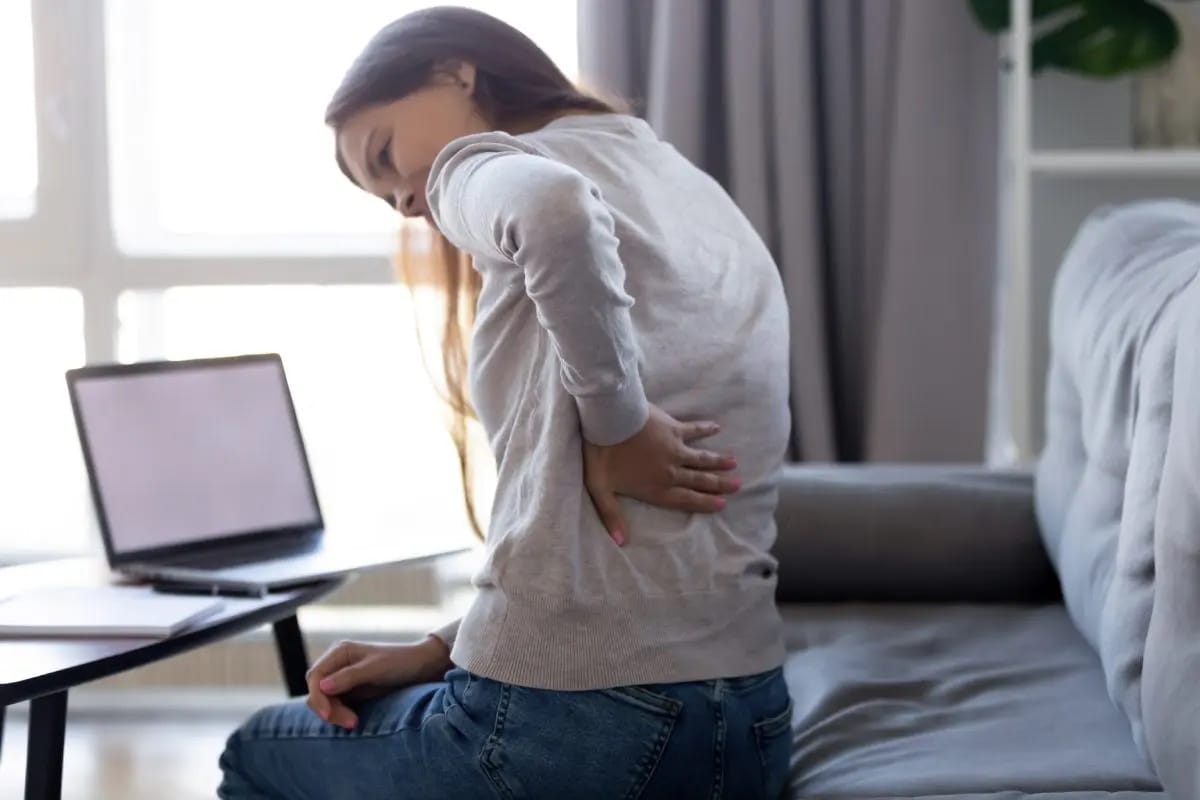Last Updated on March 28, 2025
The pain caused by a herniated disc can be terrible for many people. Almost 30% of people over the age of 40 years old will suffer from some type of spinal abnormality in their lives. It can affect people doing the most basic tasks, including driving a car, picking litter off the floor or even just sitting down for dinner.
Some people experience minor pain, while many others claim to be suffering with extreme chronic pain. Fortunately enough, a herniated disc can be solved without surgery and, in many cases, can be solved without any medication whatsoever. There are plenty of non-surgical types of back pain treatment that come before surgery, which should be a final option after all else has failed.
What Are the Causes of a Herniated Disc?
There can be many factors for why a person gets a herniated disc. As one gets older, years of bodily wear and tear can be a key cause. Over time, discs often become less flexible. This can cause a rupture even with just the smallest movement.
Those who are overweight or suffering from obesity may put extra stress on their spines to help carry the weight.
Occupational hazards can often be common issues, as jobs that require lifting, pulling or bending can be responsible for herniated discs. Improper bending and lifting techniques can especially be key factors.
Herniated disc issues often run through the family, as genetics often play a role. Many doctors will ask patients about their family’s health history when treating a person suffering from a herniated disc.
Not only can smoking be a cause of high blood pressure, birth defects, strokes, heart issues and many other health problems, it can also contribute to a herniated disc. Smoking can cause the spine to deteriorate faster than age.
And finally, studies have shown that too much sitting down can also play a role. Those who work in office jobs where they sit at their desks day in day out can often have a herniated disc, especially if they don’t sit upright.
What Are the Symptoms of A Herniated Disc?
In most cases of a herniated disc, patients claim that they are feeling pain in the lower back area. It can, however, spread to other areas in the body, which often makes it hard to pinpoint exactly where the problem is coming from. Some report feeling pain and stiffness in the neck, including often experiencing headaches that start from the top of the neck and sometimes spread up to the forehead.
A numbness and tingling feeling, similar to pins and needles, can be felt in the back, arms, hands, shoulders, feet and legs. Others might experience pain in their hips and legs, making it difficult to walk.
This is normally when the herniated disk is in the lower back area and can also cause issues in the buttocks. People may feel weakness and pain in their muscles, sometimes causing them to fall over. This is caused when the herniated disc presses on a nerve close to the spinal canal.
What Simple Adjustments Can I Make in My Life to Help With a Herniated Disc?
Although they differ from case to case, there are often simple things a person can change in their daily life that may help reduce the pain caused by a herniated disc.
Many people who sit down in the office each day typing on a computer find themselves with a herniated disc. That’s why it is important to ensure the screen is at eye level, your chair allows for good posture and your keyboard is at the correct level. People who use a laptop might want to get another screen that is at eye level so they can avoid looking down. Getting a standing desk has also shown some fantastic results.
Getting up a small bit earlier in the morning and going for a small walk before sitting into your car to go to work can help the blood circulate. Inactivity often increases the pain, so this little bit of exercise will help the muscles and the discs in your back.
Keeping a good posture helps reduce the pressure put on the spine. This is important while lifting any objects. Lifting with the legs rather than lifting with your back helps distribute some of the pressure to your legs instead of your back. A good posture for sitting and walking can also help.
This might be yet another reason for people to give up smoking. Tobacco products have proven to be very bad for the spine.
What Are Nonsteroidal Anti-Inflammatory (NSAID) Medicines Used to Treat a Herniated Disc?
In many cases, a herniated disc can be caused by inflammation in the nerves and soft tissue around the disc. When an inflamed nerve swells up, it can push up to the disc. By using NSAID medication, swelling can be reduced. In some cases, the pain might be reduced or go away. Naproxen, ibuprofen and aspirin are all over the counter drugs that can be found in most pharmacies world wide. Ask your doctor which one they feel is best for your situation. They might also prescribe a stronger form of a nonsteroidal anti-inflammatory drug.
Is Physical Therapy Used to Treat A Herniated Disc?
Physical therapy can often have fantastic results for treating a herniated disc. In some cases, physical therapy can produce better results in comparison to surgery or medication. Not only can it reduce the pain, but it can also help reduce the risk of herniated discs in the future.
Physical therapists can give the patient a personalized exercise routine. By analyzing information on where the pain is along with the client’s age, physique and goals, a physical therapist can help their client go back to their normal daily activities without pain. This is rarely a quick fix, but results can be seen after only two weeks. A physical therapist can even help with their client’s posture and stretching by implementing a strengthening routine to help build up their client’s strength back.
Meet Kourtney, a writer specializing in sex and relationships. Known for her honest and insightful approach, she explores themes of intimacy and personal growth. Her work combines personal anecdotes, expert opinions, and practical advice, helping readers navigate the complexities of modern relationships and embrace their desires. Kourtney's writing serves as a guide for those seeking authentic and fulfilling connections.
- This author does not have any more posts.


